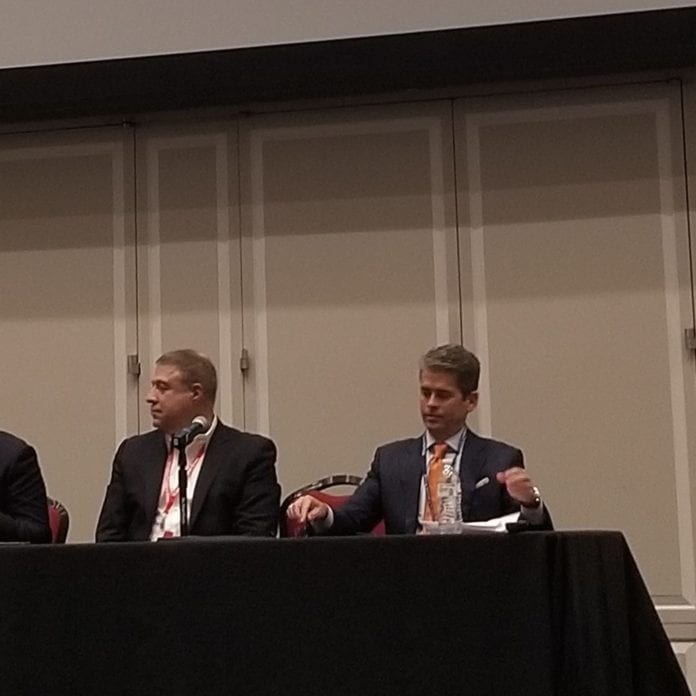COLLEGE PARK, Md.–Fiber deployment is critical for both current networks’ capacity needs and preparation for 5G networks, but it also poses significant deployment challenges.
Panelists at the Wireless Connect event at the University of Maryland discussed the hurdles ahead for sufficient network density for future 5G networks, while carriers also scramble to deal with current capacity and throughput demands on their networks — partly driven by the industry shift toward unlimited plans.
Fiber has been a big focus area for 5G preparation — Verizon, for instance, has made major fiber company acquisitions as well as putting fiber sourcing contracts in place. Fiber provider Zayo said this week that it has expanded an existing fiber contract with an unnamed wireless carrier into its biggest-ever deal to connect wireless towers, covering macro sites in 30 markets across 21 states. That work, Zayo said, bolsters the carrier’s capacity and its part of pre-5G work.
Ray LaChance, CEO of New York City fiber provider ZenFi, said that his company expects to build nearly 10,000 curbside nodes in the next three to four years; ZenFi already has more than 2,000 active nodes, he added. LaChance said that in the last two years, his company has seen “huge growth in the number of antennas that have to be deployed in the New York metro.
“We have seen a huge surge in pole-top installation outdoors, to where now, there’s antennas coming up on every intersection,” he said. “The capacity is clearly tapped out on the macros, and we’re seeing this happen at street level.”
“The bottom line is, we’re just not keeping up,” said panelist Tom Kane, president of network building and consulting company NB+C. “The networks aren’t keeping up with today’s needs.” Kane added that unlimited plans are impacting carriers and that at least one carrier the company works with is “seeing a lot of additional network challenges than they saw 12 to 18 months ago, just due to usership.” He said that in metro areas, NB+C has been putting up both “macro sites at a very rapid pace in the last 24 months” as well as small cells.
“We have had sites lighting in late 2017 and early 2018 that are 100% utilized in the first day,” Kane said. He went on to describe the fiber deployment market as “red-hot … across numerous companies, multiple wireless service providers.
“We honestly can’t find enough fiber professionals to keep up — and that’s a pre-5G world,” he added.
Geoff Hammer, said that unlimited plans have helped drive the need to get capacity “off the street” and macro network and onto distributed antenna systems in order to relieve congestion on macro sites. Hammer said that as carriers consider DAS investment, they tend to prefer proposals of clusters of buildings with a central location; major tenants and building size and location are the most important factors, he added.
The fiber itself isn’t so expensive, said Allen Dixon, director of channel development for Zinwave — but the installation is — particularly in situations where crews are digging up streets. And that challenge becomes even more difficult with the site densities expected for 5G networks.
“Places that previously were not considered accessible, now have to become accessible,” Dixon said. “We’re looking for some breakthroughs in installation technology to get those laterals from the trunk and to the buildings.”

